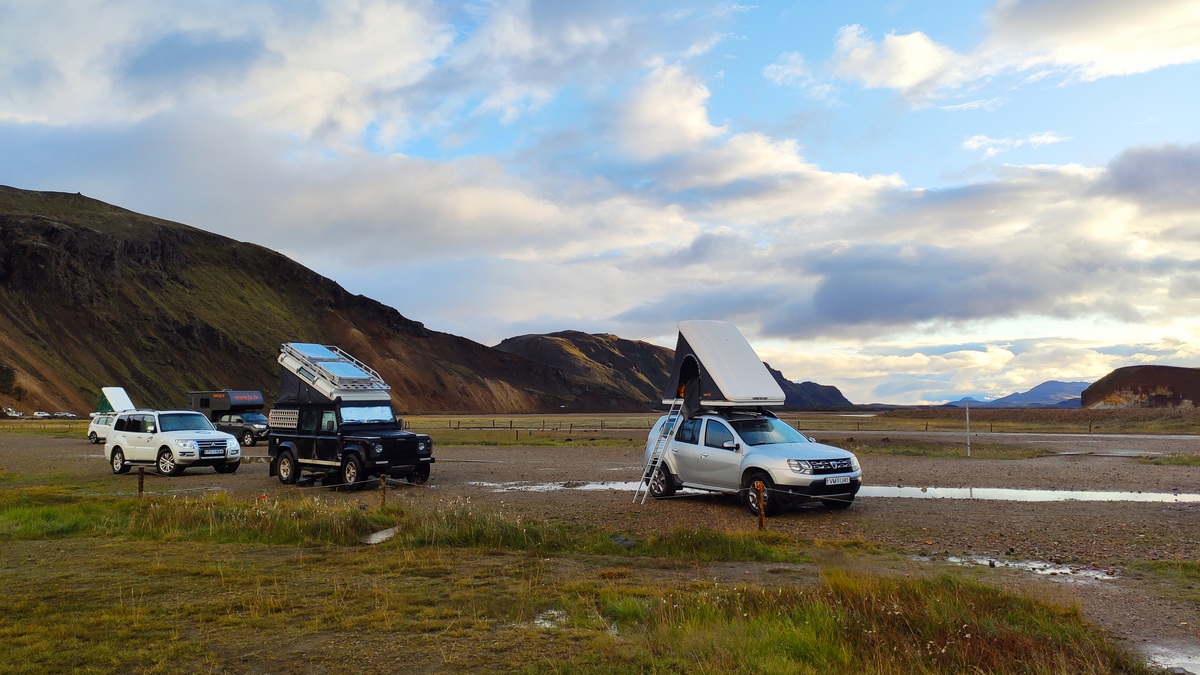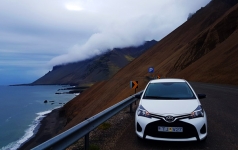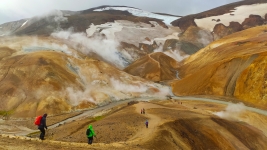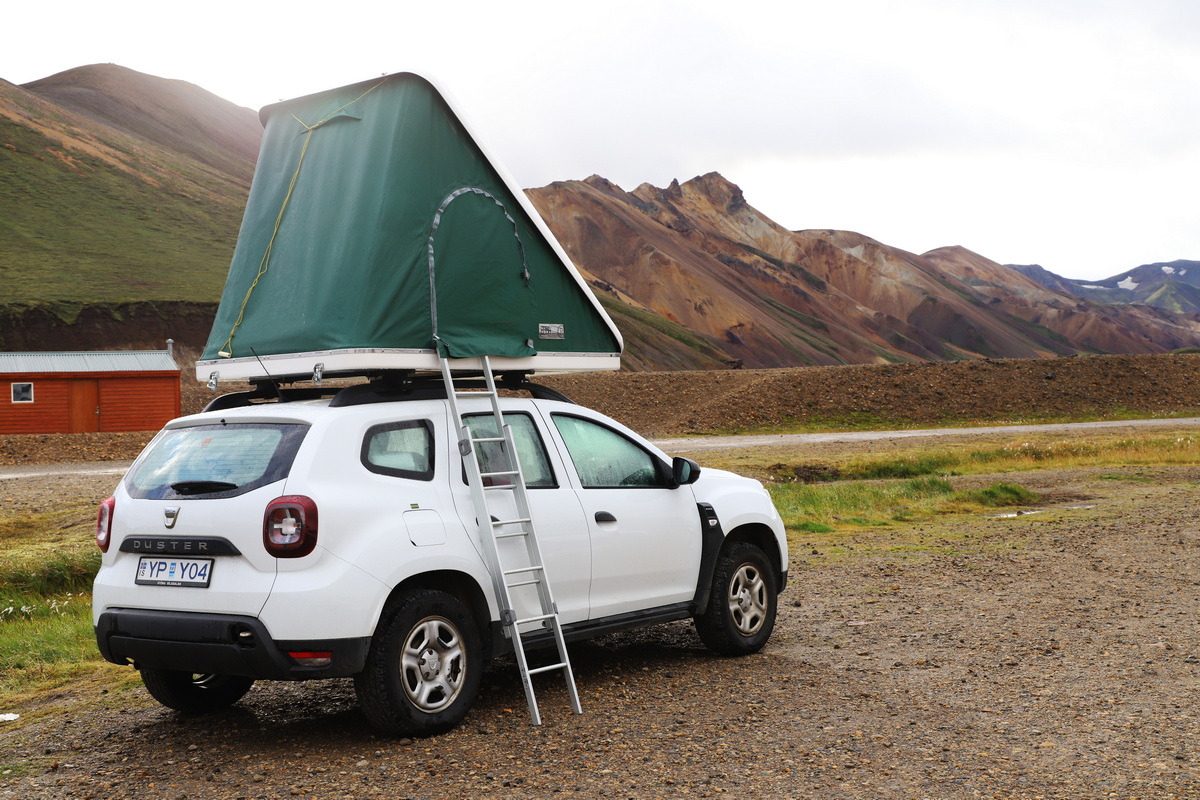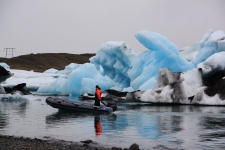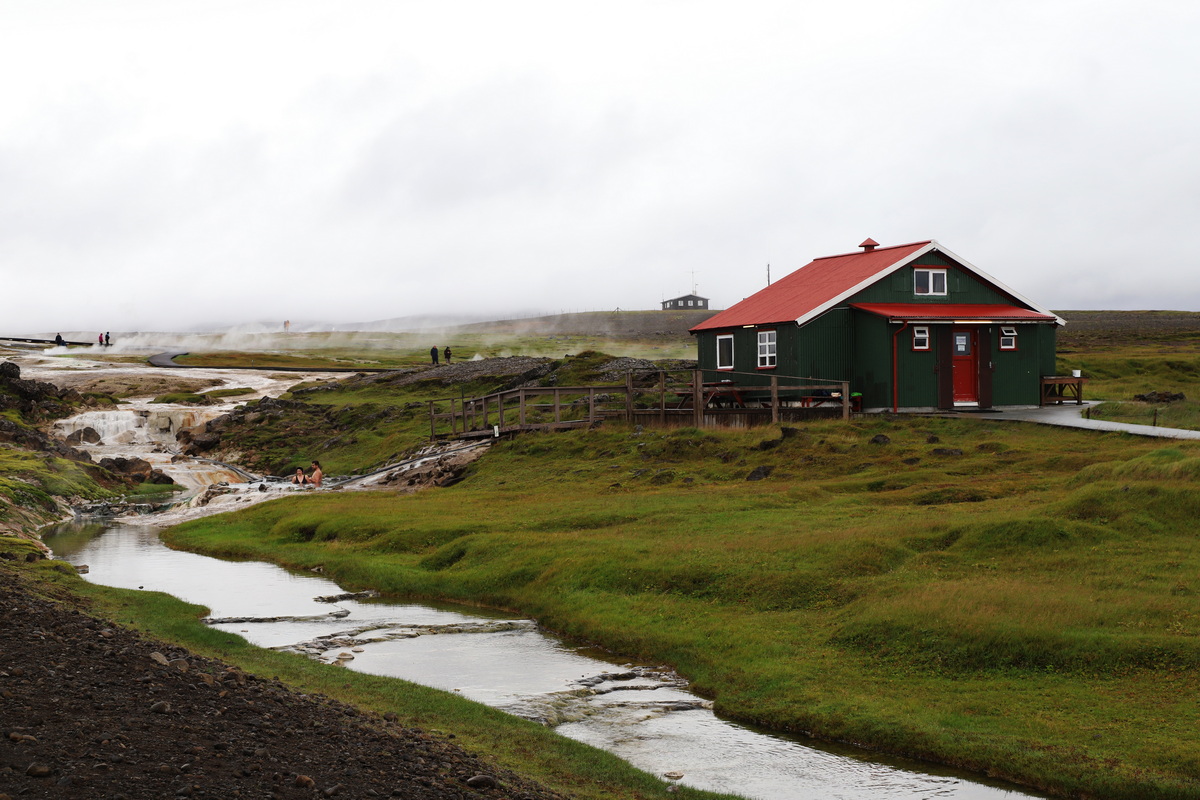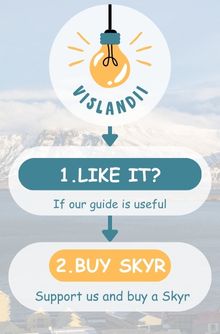Discovering the highlands on F-roads in a 4x4 car is an exciting way to enjoy a true adventure. You'll encounter lunar-like landscapes, expansive river plains, and imposing mountain ranges. This terrain is ideal for hiking, offering breathtaking vistas and occasional hot springs scattered throughout. Here's what you should be aware of before setting out on your adventure.
- What type of vehicle is suitable for tackling the F-Roads?
- River Crossings in Iceland
- How to Safely Cross Rivers
- Which F-Roads Are Prohibited?
- Which F-Roads Are Generally Safe for Travel?
- What You Need to Know Before Your Journey
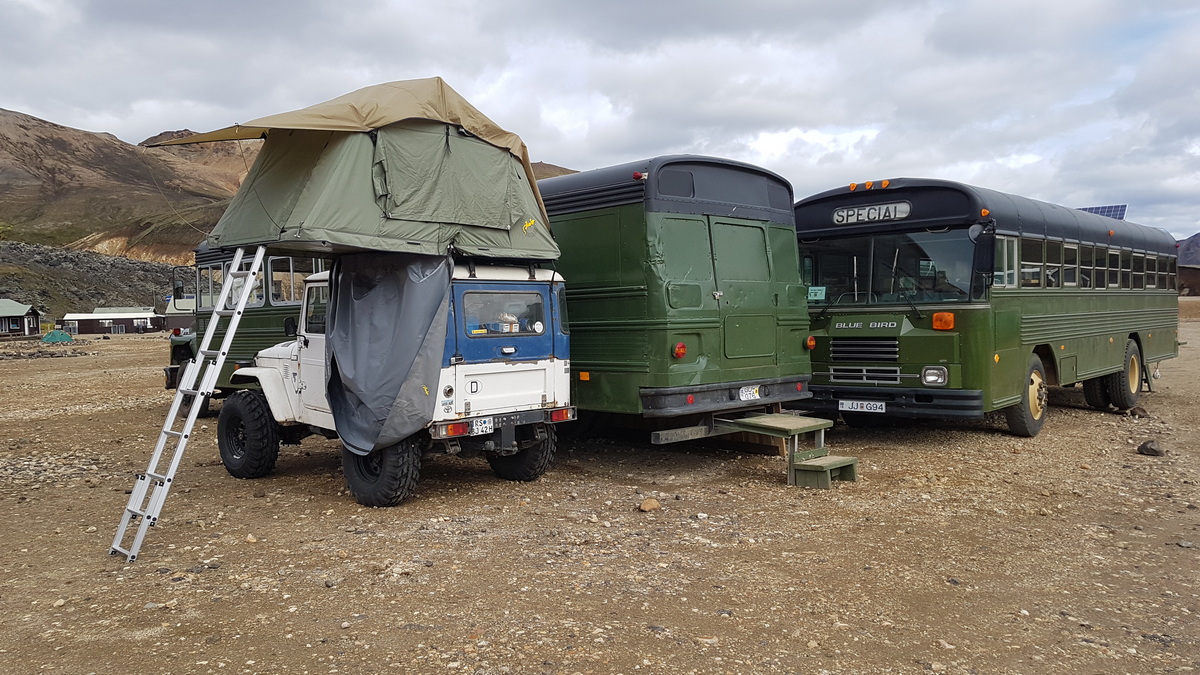
What type of vehicle is suitable for tackling the F-Roads?
The mountain and highland roads in Iceland can be quite unfamiliar to most travelers. Many of these roads are little more than faint tracks or have been eroded by springtime mud. The conditions can be perilous, and there may be situations where you need to reconsider your decision to traverse a specific F-road, especially when it becomes too challenging or involves crossing deep rivers. Finding yourself stuck on a remote F-Road can lead to serious trouble, as cell phone service is often unavailable, and attempting to seek help on foot is not advisable. Moreover, if your vehicle gets submerged in a river, the consequences can be dire.
In this guide, we will cover what to do in worst-case scenarios, your liability for damages when crossing rivers (which is entirely your responsibility), and which steps you can take to make highland journeys more accessible and relatively safe. One positive aspect is that traveling through the highland tundra in a camper is among the safer options, as you can await assistance comfortably.
Regarding the term "F-Roads," the "F" stands for "Fjallvegur" in Icelandic, signifying "Mountain Road." These F labels are typically seen on road signs with an "F" preceding the numerical label (e.g., F35). However, many remote roads, without the "F" prefix but bearing a numerical label, are often better described as 2-lane dirtbike paths rather than conventional roads. Additionally, an F-Road's condition can change rapidly, going from well-maintained one week to treacherous the next. Only 4WD rental vehicles, typically with an elevated chassis, are permitted on F-Roads, and 2WD vehicles are both ill-suited and not allowed.
Car rental in Iceland - tips and tricks
Rent a car in Iceland - how to choose proper car, what is the cost of renting a car, is it worth taking full insurance, where you can drive a car, and where you have t...
River Crossings in Iceland
Our list below includes roads with river crossings that are not officially marked as off-limits. However, this absence of restriction might indicate that the water depth is shallow or that a crossing may be attempted during periods of low water flow, such as early in the morning. If you arrive at high tide or during a period of heavy flow, it may be necessary to either turn back or wait until early morning when the ice melt is at its minimum. Taking unnecessary risks here could result in expenses amounting to tens of thousands of Euros or Dollars.
River depth can fluctuate significantly throughout the day, especially with rain or rising temperatures that accelerate snowmelt. It's strongly recommended not to attempt river crossings alone. Instead, observe how and where other vehicles are crossing and ensure that the water level remains below the vehicle's chassis. Submerging electronic components in your engine compartment can lead to engine failure. As the vehicle becomes lighter in the river, you can quickly lose traction and become stuck or start drifting downstream.
It's essential to note that no insurance company in Iceland provides coverage for river crossings or water damage. Therefore, any rental company is unable to purchase insurance for the vehicle against such damages. If the car gets flooded, it is considered a total loss and can never be used again as a rental vehicle. Moreover, the damage to the electronics alone results in minimal resale value. Average 4x4 vehicles, including modifications and camper build, have a value between 6 and 8 million Icelandic Kronas. This is the cost you'll be responsible for if you submerge a car in a river. Additionally, there is a significant risk to your life when floating helplessly down a raging glacier river, and we do not have any comprehensive advice for such situations. We strongly urge you to keep all of these factors in mind as you approach your next river crossing.
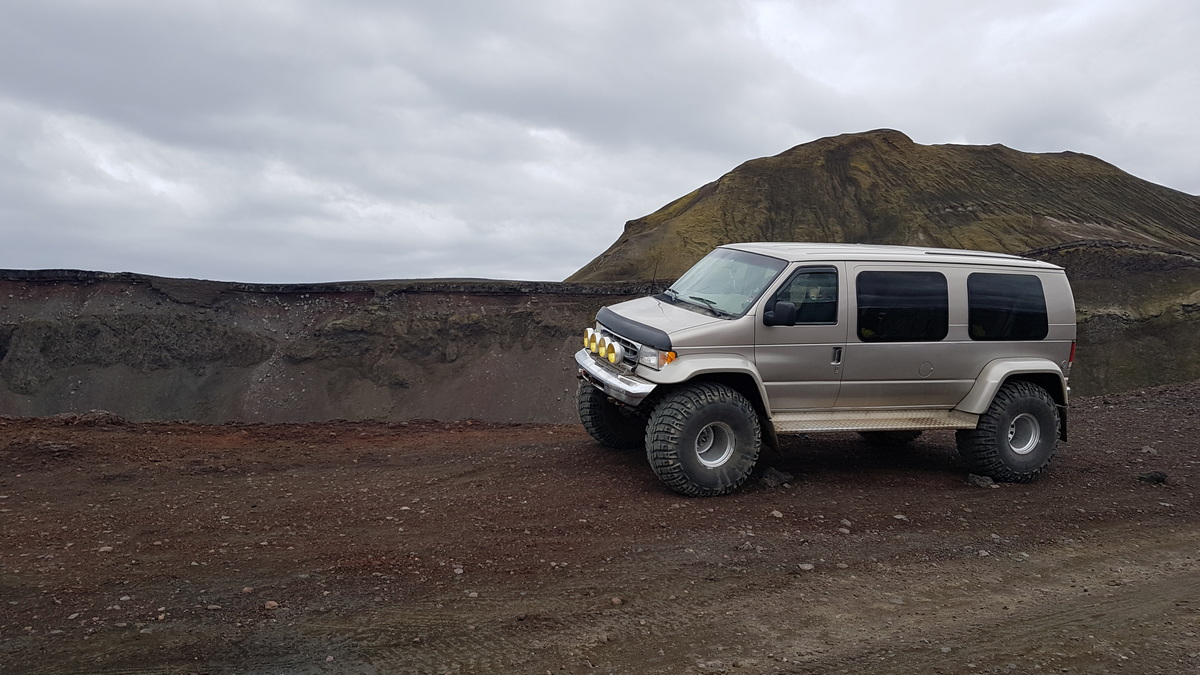
How to Safely Cross Rivers
Before diving into this section, we assume you've already read the previous chapter.
Let's begin by understanding the three types of rivers you might encounter:
-
Glacier Rivers: These rivers are at their largest during spring and early summer. They're influenced by the time of day, expanding with daytime heat and shrinking during the colder nights. Essentially, they consist of melted glacial water.
-
Spring Rivers: As the name suggests, these rivers originate from a known spring and flow consistently throughout the year, regardless of the temperature.
-
Rivers with Unknown Origins: These rivers lack a clearly defined spring or source and may form at the Earth's surface. They are sensitive to rainfall and temperature variations, often freezing in winter.
The best destinations in Iceland highlands
For those seeking adventure, Iceland's remote highlands are a stunning playground. Imagine exploring vast, untouched landscapes shaped by nature's forces. You can stan...
Guidelines for Crossing a River in a car:
-
Avoid Solo Crossings: Whenever possible, refrain from crossing a river alone. Most highland areas have occasional traffic, and attempting a river crossing solo can be risky. It's safer to wait for or seek help from a capable vehicle, such as a super jeep.
-
Flow with the River: When approaching a river, aim to follow the flow of the river. This provides better traction and reduces the risk of losing control. Attempting to drive upstream increases the chances of flooding your engine.
-
Maintain a Steady, Slow Pace: Drive at a slow and consistent speed in the water, without stopping. Increasing your speed raises the water level above your vehicle's hood, potentially damaging the engine air intake. Slower speeds also aid in spotting obstacles and rocks beneath the water. Stopping increases the risk of getting stuck.
-
Plan Ahead and Have Backup Plans: Visualize an entry point, a safe route through the river, and an exit strategy. Additionally, have backup plans (Plan B and Plan C) in case your initial route encounters obstacles or challenges. The key is to stay calm, act quickly, and never stop or accelerate excessively.
-
Calm Waters Indicate Depth: Typically, the calmest-looking areas of the river are the deepest. Take your time to study the river and choose your route based on the rules outlined above.
-
Cross Rivers in the Early Morning: For many rivers, especially glacier rivers, water flow is lower in the early morning before snowmelt occurs. This time provides safer conditions for crossing.
-
If in Doubt, Don't Cross: Venturing into a river without certainty of reaching the other side is not advisable. Your life, the safety of others, the condition of a car, and the valuable time of Search and Rescue teams are more important than seeing a particular highland location.
-
Stay on Legal Roads: Ensure that your entry and exit points are on legally designated roads. Avoid driving up riverbanks or onto mossy or ecologically sensitive land, as it is strictly prohibited and subject to substantial fines imposed by the Icelandic government.
Your safety and the preservation of Iceland's natural beauty are paramount.
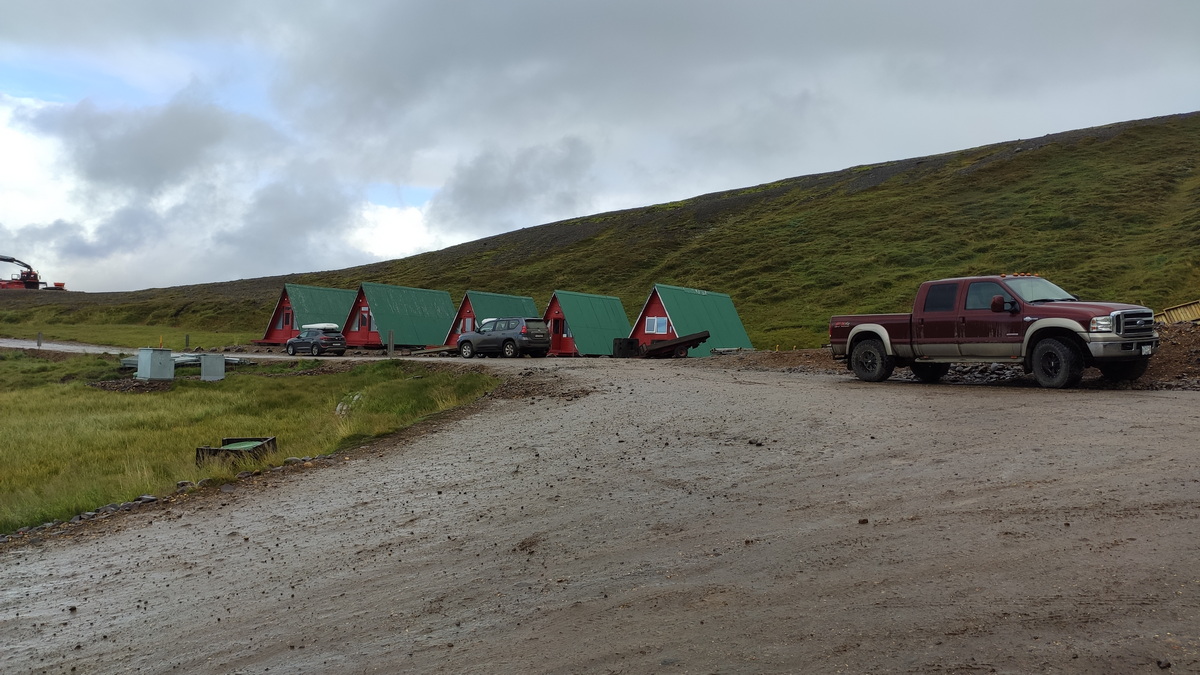
Which F-Roads Are Prohibited?
These specific routes are off-limits for most of rental cars, and with good reason. Some roads, though not officially marked as F-Roads, can be just as challenging and treacherous. It's vital to steer clear of these forbidden roads, even when traveling in a 4×4 car:
- Road 622 in the Westfjords
- Road 337 to Þjófahraun
- Road F578 to Arnavatsheidi
- Road F210 around Mýrdalsjökull
- Road F26 through the highlands
- Road F980 Kollmúluvegur
- Road F249 to Þórsmörk
Which F-Roads Are Generally Safe for Travel?
You can generally explore the following F-Roads with caution, bearing in mind that road conditions can vary, and common sense is crucial when selecting your routes. Please be aware that Rental company cannot guarantee the accuracy of this information due to the ever-changing nature of F-Road conditions. Iceland offers numerous mountain roads, and here are some of our preferred ones, which we highly recommend if the conditions are favorable:
-
F35 to Kjolur: This popular mountain route takes you from Geysir on the Golden Circle, right through the heart of Iceland to the north.
-
F347 Kerlingafjallavegur: A splendid detour branching off from the F35, leading to the geothermal wonderland of Kerlingafjöll.
-
550 Kaldidalsvegur: This road connects Þingvellir to Húsafell, offering a scenic journey.
-
F208 to Landmannalaugar: An adventurous route leading to the captivating Landmannalaugar area.
Always exercise caution and adapt to the conditions when venturing on F-Roads. Your safety is paramount.
ᐅTOP 10 attractions in Iceland
Iceland is known for its natural attractions... But what exactly you should definitely see is the Top 10 Natural Attractions in Iceland
What You Need to Know Before Your Journey
The highland weather can be unpredictable, so it's essential to be well-prepared for all seasons. Ensure you have an adequate supply of water, fuel, and provisions to last several days, as there are no stores or gas stations in the area, and you'll be self-reliant. Regardless of the specific F-Road you plan to traverse, always carry water, food, and extra fuel. Rental company can provide you with an additional fuel canister on request.
The biggest amount of Icelandic rental companies you can find on guidetoiceland.is
We highly recommend completing this form before venturing out of cellular service coverage, and have a friend check in with you after 2-3 days.
Stay informed about the weather conditions, which can be accessed through the Icelandic Met Office website at www.vedur.is.
Additionally, you should monitor road conditions by visiting www.road.is.
F-Roads in Iceland are typically open during the summer months, and you can find specific dates here.
Please remember that river crossings are undertaken at your own risk. Consider any body of water taller than your boots to be a river. Damages resulting from river crossings can easily exceed €10,000. Your safety is paramount.

